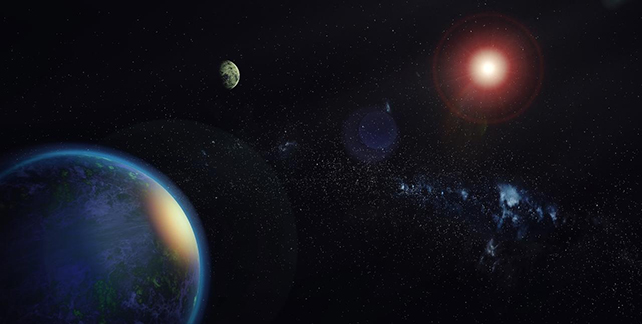In the search for life on other planets, a couple of promising leads have just opened up: Astronomers have identified two worlds with Earth-like masses, sitting in the habitable zone around a red dwarf star called GJ 1002.
The habitable zone around a star is the sweet spot between a planet being too hot or too cold to support life. To be in this zone, planets must be orbiting their star at a distance where, theoretically, there could be liquid water on their surface.
"GJ 1002 is a red dwarf star, with barely one-eighth the mass of the Sun," says astrophysicist Vera María Passenger from the Instituto de Astrofísica de Canarias (IAC) in Spain. "It is quite a cool, faint star. This means that its habitability zone is very close to the star."

While we're a long way from confirming alien life or even running water yet, GJ 1002b and GJ 1002c are ticking all the boxes so far – and at a mere 16 light-years away from our Solar System, they're close to where we are in the Universe, astronomically speaking.
Two space-gazing instruments – ESPRESSO (Echelle SPectrograph for Rocky Exoplanets and Stable Spectroscopic Observations) and CARMENES (Calar Alto high-Resolution search for M dwarfs with Exoearths with Near-infrared and optical Echelle Spectrographs) – had to be used in tandem to spot the star and its planets.
That's because the faint light coming off GJ 1002 required instruments of great sensitivity and precision to recognize its signatures. The research team used 139 spectroscopic observations (deep space radiation measurements) taken between 2017 and 2021 to spot the planets.
So far, we don't know much about these celestial bodies, except where they're located. GJ 1002b is closest to its star and takes just over 10 days to complete an orbit; GJ 1002c is further out, with an orbit of just over 20 days.
The good news is that the relatively close proximity of GJ 1002b and GJ 1002c means that more detailed observations are easier to do. The next step will be to assess their atmospheres based on either the light they reflect or the heat they give off.
"The future ANDES spectrograph for the ELT telescope at ESO, in which the IAC is participating, could study the presence of oxygen in the atmosphere of GJ 1002c," says astrophysicist Jonay I. González Hernández from IAC.
We're now up to a total of 5,000 exoplanets – planets outside our Earth – that have been observed. As telescopes and data-crunching algorithms get better, we can spot objects that are smaller and further away from Earth.
Thanks to these improvements in technology, we're getting closer to being able to measure the chemical signatures of life on these distant planets, even though they're light-years away through space.
"Nature seems bent on showing us that Earth-like planets are very common," says astrophysicist Alejandro Suárez Mascareño from IAC. "With these two, we now know seven in planetary systems quite near to the Sun."
The research has been published in Astronomy & Astrophysics.
https://ift.tt/gDHvVJq
Science
No comments:
Post a Comment